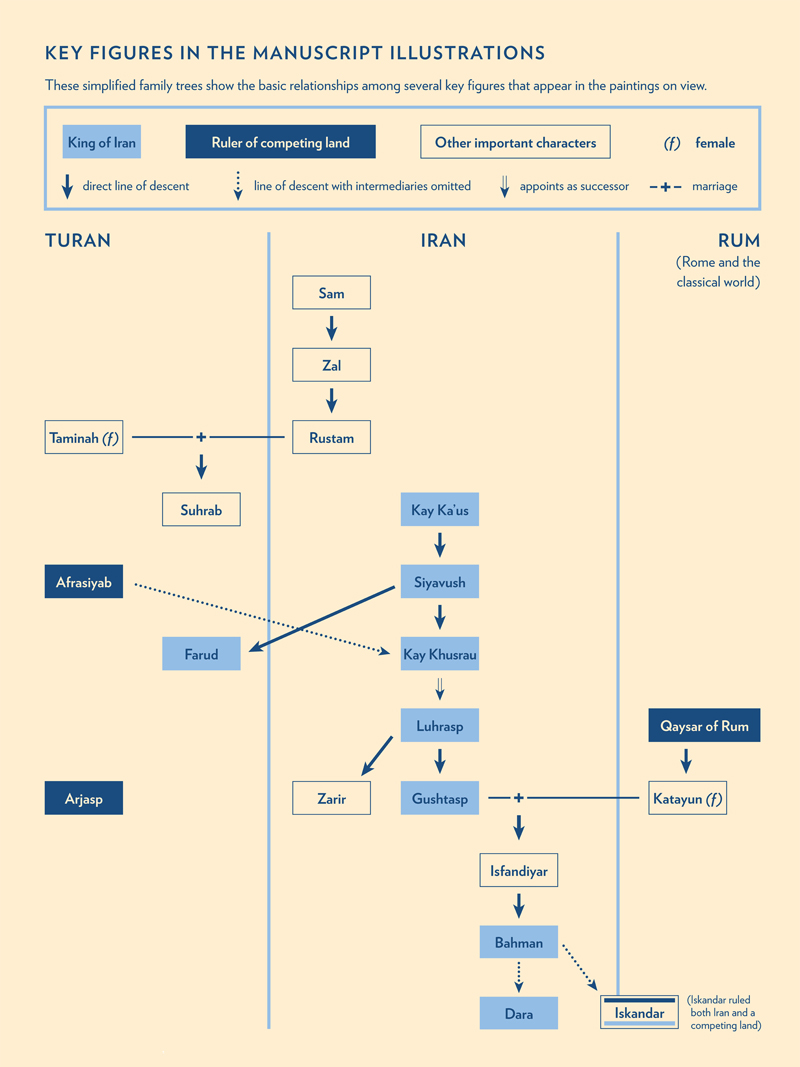Home / The Shahnamah and the Early Tradition of Illustration
The Shahnamah and the Early Tradition of Illustration
Muhammad Juki’s Shahnamah is a superb example of a Persian manuscript from the fifteenth century. The text is in the elegant script form called nastaʿliq, which at the time of its production was the preferred style for fine copies of poetry. In its present state the manuscript contains thirty-two miniatures created by several different hands as well as two pages of intricate decorative illumination, all of which are on view in the exhibition.
As is typical of court painting from Iran in this period, the influence of both native and foreign traditions can be seen in the style of the illustrations. For example, landscape elements derived from Chinese painting appear in the stylized rock and mountain formations. Chinese influence is also found in the way the painters depict clouds and flames. The painters of the manuscript paid careful attention to precisely placed compositions with balanced hues and skillfully modulated color. The overall effect is a lyricism that typifies the period.
The chart below identified key characters in the manuscript illustrations.
To learn more about the Shahnamah and see illustrations from other manuscripts, watch this video on Asia Society’s Homeland Afghanistan site.



 Share
Share